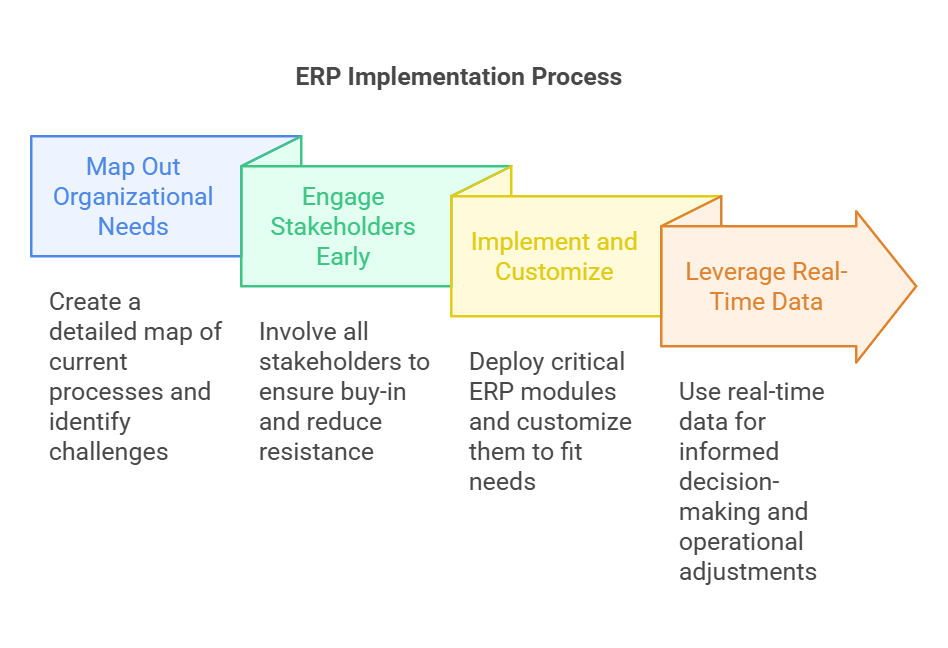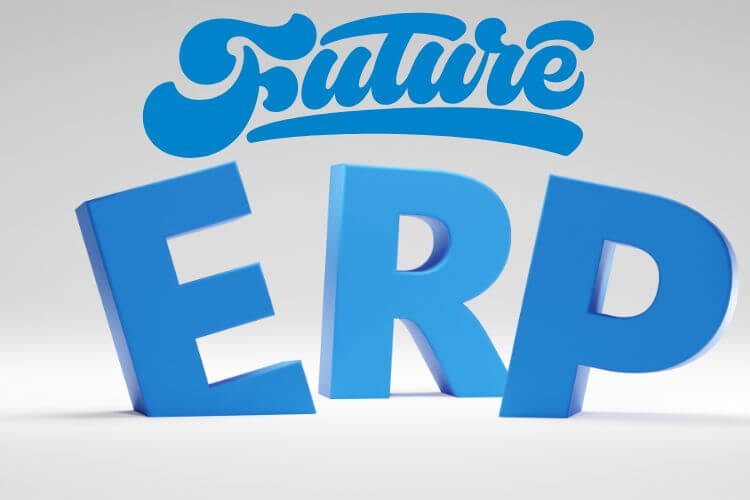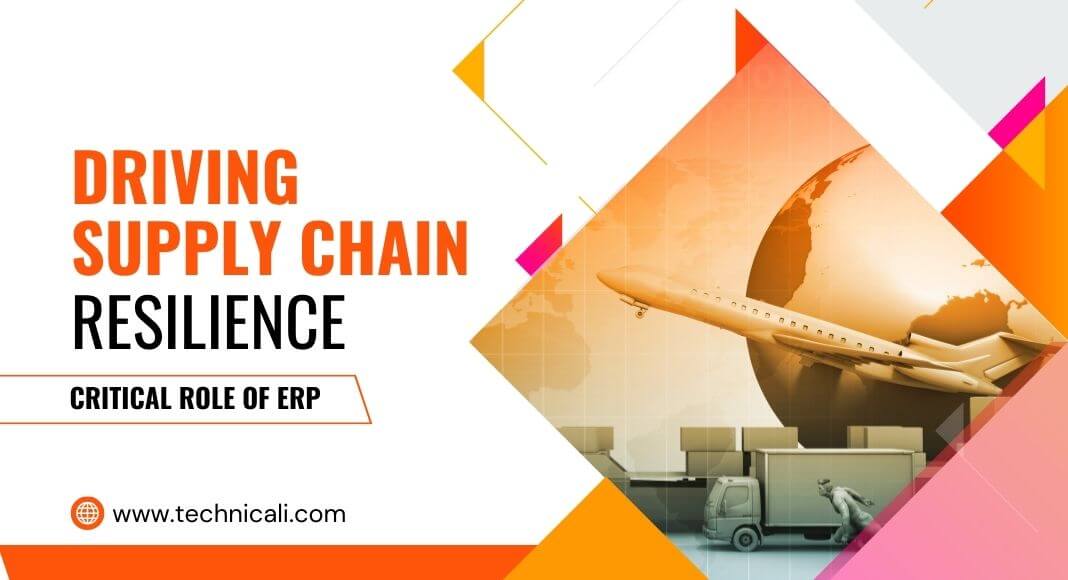Contents
- 1 ERP System: The Backbone of a Resilient Supply Chain
- 2 Understanding ERP as a Business Solution
- 3 How ERP Builds a Resilient, Sustainable Supply Chain
- 4 Step-by-Step Guide to Implementing an ERP System
- 5 Common Pitfalls and How to Tackle Them
- 6 Sustainable Gains and the Future of ERP Systems
- 7 Conclusion
ERP System: The Backbone of a Resilient Supply Chain
In today’s agile and increasingly unpredictable business environment, a resilient supply chain is indispensable. According to a 2023 study, 79% of survey respondents in Deloitte’s supply chain panel have observed marked movements and trends within the field they operate related to sustainability. Organisations can minimise operational hurdles and swiftly address disruption threats by leveraging enterprise resource planning, especially cloud ERP. This article explores how the right ERP system enables supply chain management to remain sustainable, cohesive, and responsive to market upheavals.
Understanding ERP as a Business Solution
Modern ERP technology isn’t just software; it’s a solution designed to empower every corner of your business. ERP aligns organisational objectives with on-the-ground realities, from inventory oversight to financial forecasting, creating a backbone for all critical business processes.
What Is an ERP System and Why Is It Indispensable?
- ERP stands for enterprise resource planning, a singular solution harmonising various business operations.
- ERP systems provide a cohesive framework where finance, human resources, and supplier management interconnect seamlessly.
- Using ERP allows businesses to track every essential metric such as inventory levels or production times; in real-time, ensuring data-driven decision-making.
The Digital Shift to Cloud ERP
- Cloud ERP or cloud-based ERP streamlines implementation while offering easy access to real-time data anytime, anywhere.
- Customisation options abound, allowing you to customise modules to fit your organisation’s needs and scalability goals.
- By automating routine business processes, you can boost operational efficiency and free up resources for innovation.
How ERP Builds a Resilient, Sustainable Supply Chain

A resilient supply chain thrives on visibility, continuity, and sustainable operations. Let’s explore how an ERP system helps businesses achieve these objectives.
Enabling Visibility and Continuity
- A cutting-edge ERP system can help create real-time visibility across the supply chain, swiftly identifying bottlenecks.
- By employing predictive analytics, leaders can make informed decisions on capacity planning and manage inventory more strategically.
- Modern systems enable seamless integration with customer relationship management (CRM) and supplier relationship management (SRM) tools, enhancing customer satisfaction and stronger partner collaboration.
Stat to Note: The real-time data across various departments that McKinsey estimates correlate with a 25% higher revenue growth compared to competitors.
Integrating Sustainable Practices
- Embracing sustainable practices is no longer optional; it’s vital for corporate reputation and resilience.
- ERP solutions allow businesses to track and manage their environmental impact by unifying data from multiple locations.
- When you integrate sustainability metrics into your ERP system, you can monitor carbon footprints, water usage, and energy consumption, ensuring responsible governance and compliance with regulatory requirements.
Step-by-Step Guide to Implementing an ERP System

Understanding how to implement an ERP system can feel daunting. However, a structured approach will accelerate adoption and minimise operational pitfalls.
Map Out Your Organisational Needs
- Begin with a detailed map of current business processes from order intake to shipment verification.
- Identify challenges faced in integration or supplier communication to target immediate improvements.
- Align your ERP deployment with existing optimisation goals and any looming regulatory requirements.
Engage Stakeholders Early
- Gather every stakeholder, from senior leadership to end-users, to foster buy-in and reduce resistance.
- Hire or consult an ERP consultant specialising in streamlining operations, customisation, and data migration strategies.
- Maintain transparent communication about timelines, module selection, and expected outcomes.
Implement and Customise
- Implement the most critical modules first, like supply chain management or customer relationship management, to deliver immediate impact.
- Ensure customisation fits your unique organisational scale, letting you seamlessly expand functionality as you grow.
- Incorporate advanced features like inventory tracking dashboards to enhance functionality and maintain continuous improvement.
Leverage Real-Time Data for Decision-Making
- Real-time dashboards supported by predictive analytics equip managers to forecast demands and adjust orders preemptively.
- Cross-functional integration guarantees all departments enjoy seamless data flow, promoting consistency in business operations.
- Using this data, you can swiftly pivot production schedules or optimise logistics routes, improving overall continuity.
Common Pitfalls and How to Tackle Them
No transformation is entirely smooth, but understanding common mistakes can help you tackle them proactively.
Overlooking Human Resources and Change Management
- Management within the business must roll out training programs and address user anxieties early to avoid confusion.
- Emphasise how modern ERP tools enable employees through better data accessibility and simplified workflows.
- Highlight the benefits, like improved performance metrics, to garner excitement rather than resistance.
Failing to Plan for Integration
- The lack of an integration strategy is a major stumbling block. Interconnect your ERP system with external platforms, finance apps, and procurement software to avoid data silos.
- Choose an ERP system that offers robust APIs, facilitating customisation and future expansions of business functions.
- This approach allows businesses to stay flexible, swiftly adapting to new partners, markets, or product lines.
Sustainable Gains and the Future of ERP Systems

Forward-thinking leaders understand that ERP is not static; it evolves to meet emerging challenges and industry shifts.
The Growing Role of Artificial Intelligence
- Artificial intelligence in the future of ERP systems improves demand forecasts, route optimisation, and supplier risk assessments.
- Machine learning algorithms can detect anomalies in production runs or distribution channels, allowing for proactive resolutions.
- Combined with IoT devices, AI-driven ERPs can trigger automated restocks when inventories dip below a certain threshold.
The Agile, Resilient Supply Chain
- Agile methodologies champion short decision cycles, continuous feedback, and iterative improvements; a perfect fit for creating a resilient supply chain.
- Integrating supplier relationship management data within ERP fosters a holistic approach to cost controls, resource allocation, and quality control.
- Companies that implemented Agile methodologies reported a 30% reduction in lead times on average.
How Businesses Can Further Optimise
- Optimise internal workflows and external logistics by using cloud ERP for consolidation of global operational data.
- As you implement sustainable practices, track progress on carbon emissions or energy usage to meet corporate and public expectations.
- Aligning your cloud ERP with evolving regulatory requirements keeps you compliant, flexible, and ready to innovate.
Conclusion

A resilient supply chain anchored by a robust ERP system is not just a competitive advantage; it’s a necessity in a fast-evolving marketplace. Through cloud ERP deployments, various business units benefit from integrating information, enjoying real-time visibility that fuels rapid responses to market twists. By weaving sustainable practices into every production stage and leveraging deep analytics, businesses can continuously enhance their competitive edge.
Start your journey to build resilience today by implementing an ERP solution tailored to your organisation’s scale. When you streamline operations and refine supplier relationships, you unlock sustained operational efficiency and stable growth. Check out our Top 7 ERP article, where we have listed some of the best ERPs in the market and join the global movement toward a more innovative, more interconnected future, one resilient supply chain at a time.


